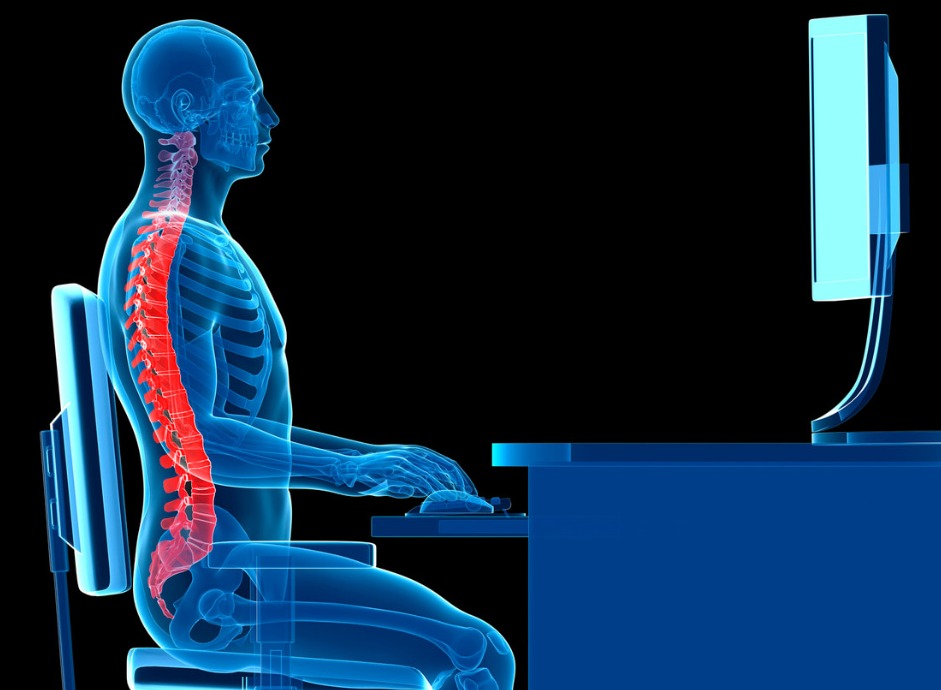How to prevent musculoskeletal disorders in the workplace?
Published Jan 6, 2024 • By Claudia Lima
Musculoskeletal disorders (MSDs) are health conditions affecting the joints, muscles and tendons. They can be aggravated by a number of factors, including work-related ones. Good news is that these health problems, which are linked to posture and repetitive movements, can be prevented through ergonomic solutions in the workplace.
What exactly are musculoskeletal disorders (MSDs)? How are they treated? What are the best strategies for minimizing the risk of MSDs at work?
Find all the answers in our article!

What are musculoskeletal disorders (MSD)?
Musculoskeletal disorders (MSDs) can affect different parts of the body, including the back, shoulders, elbows, wrists and knees, as well as muscles, tendons, ligaments, nerves and joints.
MSDs have many causes, but the type of job and work environment frequently play a role in their onset and aggravation. Workers in various sectors such as transport and logistics, construction, IT, health, retail, etc., are likely to develop MSDs.
Every employer must take necessary measures to ensure the safety and protect the physical and mental health of their employees. These measures include: assessing and preventing occupational risks, providing information and training, setting up appropriate work environment and allowing access to resources.
Certain leisure activities such as gardening, DIY and some sports can also cause musculoskeletal disorders.
The most common and well-known musculoskeletal disorders (MSDs) are:
- Carpal tunnel syndrome in the wrist,
- Rotator cuff syndrome in the shoulder,
- Lateral epicondylitis (or tennis elbow),
- Tendonitis,
- Raynaud's disease,
- Lumbago (lower back pain).
Another type of MSD, knee hygroma, is less common.
What are the causes and risk factors of musculoskeletal disorders (MSD)?
MSDs result from the imbalance between the body's physical capacities and the stress and strain to which it is exposed. Several risk factors contribute to the development of musculoskeletal disorders (MSDs). They can be classified into several categories.
Biomechanical factors
These are movements of force, extreme or unnatural gestures and postures (gestures made with the arms above the shoulders, twisting of the wrist, of the trunk, flexion and extension of the elbow, frequent repetition of the same gesture), static work, carrying heavy loads and mechanical vibrations and shocks.
Environmental factors
Cold, noise and poor lighting are factors that aggravate mechanical stress.
Social and psychological factors
These factors are linked to how employees perceive their job.
Some examples: dissatisfaction with their job, lack of independence at work, pressure to meet deadlines, lack of professional recognition, poor social relations, etc.
Organizational factors
They are linked to organization of work environment, such as the workplace or working hours.
Individual factors
As we age, our joints become more fragile. This physical fragility, which is also linked to the onset of other chronic conditions, as well as poor mental health play an important role in the onset of MSDs.
What are the symptoms of musculoskeletal disorders (MSD)? How are they diagnosed?
The most common symptoms of musculoskeletal disorders (MSDs) are pain, muscle weakness, stiffness, joint noise and reduced range of movement.
These disorders develop in several phases, from the initial stage, where pain and functional discomfort appear only while a certain activity is being performed, without reducing the person's ability to work, to the advanced stage, where the symptoms are more specific and work can no longer be done properly.
MSDs are diagnosed by primary care physicians. If a work-related cause is suspected, the doctor may ask more specific questions about the work environment.
How to treat musculoskeletal disorders (MSD)?
Workers of certain spheres are likely to develop musculoskeletal disorders (MSDs). Prompt and appropriate management of these conditions is necessary to avoid long-term complications.
Treatment of MSDs can include avoiding the risk factors, relieving pain with the help of medication, using medical devices (orthoses), steroid injections, and even going through surgery. Other therapeutic solutions can be applied to treat MSDs, such as physical therapy and rehabilitation.
How to prevent musculoskeletal disorders in the workplace?
Preventing musculoskeletal disorders (MSDs) involves risk assessment, an ergonomic study of the workplace, workstation layout, the choice of a suitable equipment and work organization.
Occupational therapy also has a decisive role to play. It must identify risk situations and people at risk, identify conflicts, suggest adjustments to workstations, limit the excessively repetitive nature of certain harmful movements or excessively prolonged postures, etc.
Employers can also encourage regular breaks, and train employees in stress management and appropriate gestures and postures necessary for the performance of their task.
There are a number of solutions for preventing musculoskeletal disorders (MSDs) that every person, concerned by these problems, can try, such as:
- Adjusting your posture,
- Taking regular breaks,
- Exercising regularly to strengthen muscles and joints,
- Warming up before starting a physical task,
- Using appropriate tools and equipment,
- Complying with your workplace safety regulations,
- Monitoring your physical and mental health.
Preventing musculoskeletal disorders (MSDs) in the workplace is an occupational health and public health issue. It requires close collaboration between employers, employees and health professionals.
By adopting ergonomic practices, raising awareness and implementing preventive measures, companies can significantly reduce the risk of MSDs and promote a healthy and productive work environment.
Take care!
Sources :
Comprendre les troubles musculosquelettiques, ameli.fr
Troubles musculosquelettiques, travail-emploi.gouv.fr
Troubles musculosquelettiques (TMS), ce qu'il faut retenir, inrs.fr
Guide pratique TMS dans la fonction publique, fonction-publique.gouv.fr
TMS : personnes à risques..., santemagazine.fr
Présentation des symptômes des TMS, msdmanuals.com
Santé : 86% des salariés souffrent de TMS, francetvinfo.fr
1 comment
You will also like

What are the dangers associated with the over-the-counter sale of certain medicines?
Dec 19, 2020 • 6 comments

 Facebook
Facebook Twitter
Twitter


